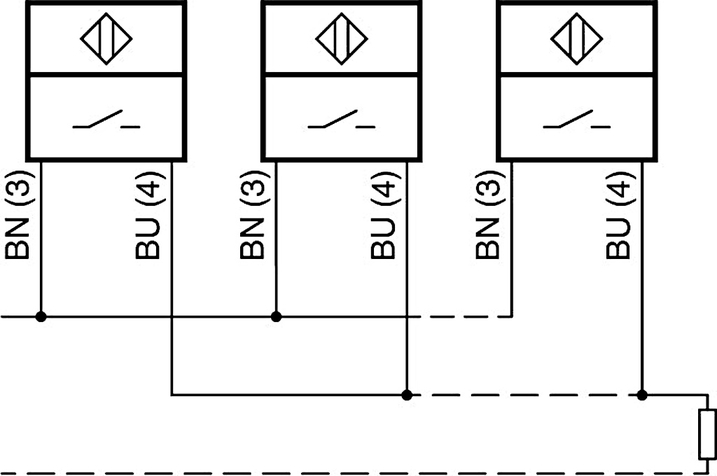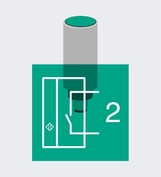Sensor Connection

Physically, the basic circuits of a sensor can fundamentally be constructed with two, three, or four wires. There is some basic information to be considered when connecting these sensors.
Basic Information: Connecting Multiple Sensors by Connection Type
Capacitive sensors can be connected in parallel to other mechanical or electronic switches. The following must be observed.
Parallel Connection of Multiple Sensors
3-Wire Sensors
In principle, capacitive sensors in 3-wire technology can be connected in parallel to mechanical switches or other sensor outputs. One exception is sensors with push-pull output. This type of sensor cannot be connected in parallel, either to sensors or to mechanical switches.

2-Wire Sensors
If multiple 2-wire sensors are connected in parallel, the sum of all residual currents flows through the load and may prevent the load from switching off. This limits the maximum number of capacitive sensors connected in parallel in 2-wire technology.
When 2-wire sensors are connected in parallel to mechanical switches, the load can become deactivated for a short time.

Series Connection of Multiple Sensors
3-Wire Sensors
Due to the time delay before availability of the individual sensors, the reaction time increases when 3-wire sensors are connected in series. In addition, the supply voltage of downstream sensors is always lower due to the voltage drop at the sensor output stages when 3-wire sensors are connected in series. The series connection of a single 3-wire sensor to one or more mechanical contacts is not critical.

Note
We generally recommend that capacitive sensors are not connected in series. The interconnection of multiple sensors via logic modules is preferable in terms of predictable behavior and reliable function.
Additional Information

2-wire sensors are operated in series to the connected load. There are no separate connections for the load circuit and the voltage supply of a 2-wire sensor.

3-wire sensors are sourcing, type "PNP", or sinking, type "NPN", with separate connections for the power supply and for the output.

4-wire sensors are proximity sensors of sensor type "E" (~3-wire). The use of these sensors can keep the number of sensor variants to a minimum and thus reduce storage costs.









 +45 7010 4210
+45 7010 4210